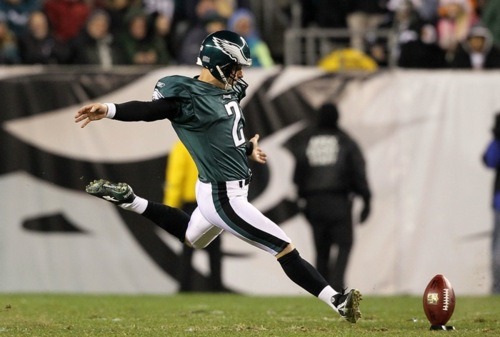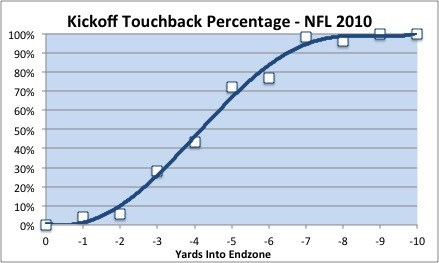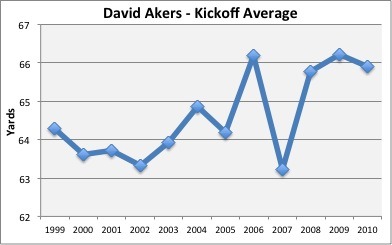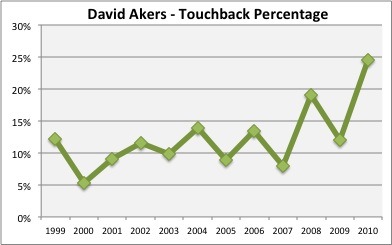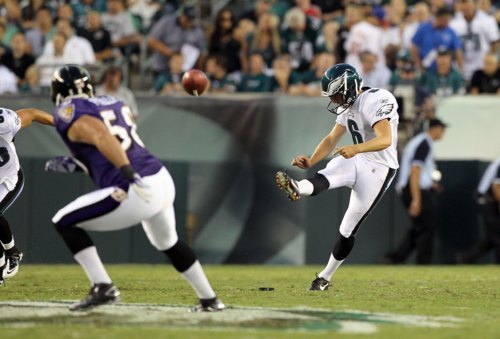
Last year, I projected that the new kickoff rules — mainly the new default kick spot at the 35, rather than 30 yardline — would result in a huge increase in touchbacks. The math from 2010 showed that touchbacks would likely go from 16 percent to almost 40 percent of all kicks.
Turns out I was close, but not high enough. According to what I compiled directly from play-by-play data, 44.5 percent of all kicks were touchbacks in 2011. But let’s go a little bit deeper.
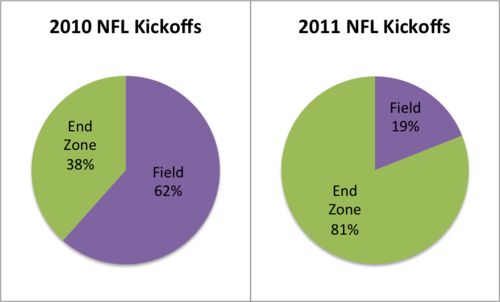 Just how much did those extra five yards help the kickers? Check out the graphs at right.
Just how much did those extra five yards help the kickers? Check out the graphs at right.
In 2010, only 38 percent of all kickoffs made it to the end zone. With an extra five yards of distance, NFL kickers took advantage. They kicked 81 percent of all kicks into the end zone in 2011.
But that’s not all. With that kind of increase, we would expect even higher levels of touchbacks than just 44 percent. So what kept it down? Apparently, the returners.

The chart above plots the percentage of kickoffs that became touchbacks by where they landed in the end zone. Obviously, as the kicks got deeper, returns became more rare.
The odd thing is that the end zone kicks were returned much more frequently in 2011 than in 2010. The first two yards are still almost always returned. But under the old rules, returners frequently didn’t bring out kicks that were just 3 or 4 yards deep. By 5 yards into the end zone, 72 percent were touchbacks.
This past year, that changed. Returners actually brought out more than half of all kicks as deep as 7 yards into the end zone. There were still more touchbacks overall, and a higher percentage of kicks into the end zone became touchbacks with the added distance. But returners took more risk than before, even knowing that the coverage teams also had five yards less to make up.
Perhaps kick returners felt the need to justify their continued presence on the roster. Kneeling down over and over would drive many a fierce competitor to take unnecessary risks. It will be interesting to see how that changes in year two after the kickoff changes.
Photo from Getty.

